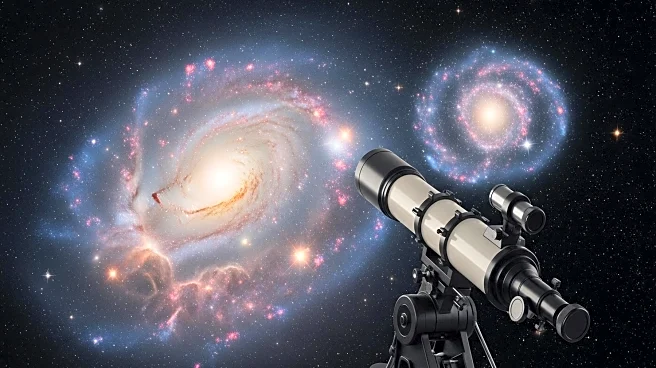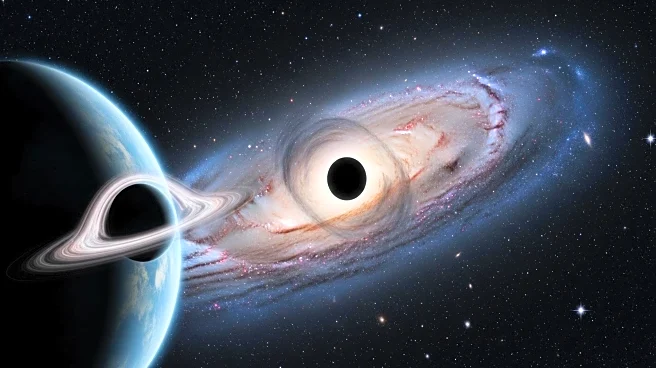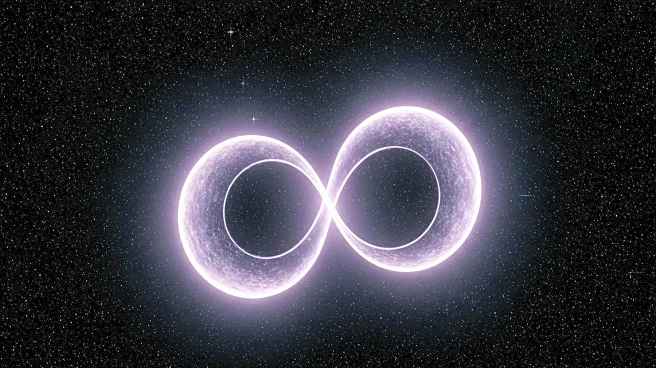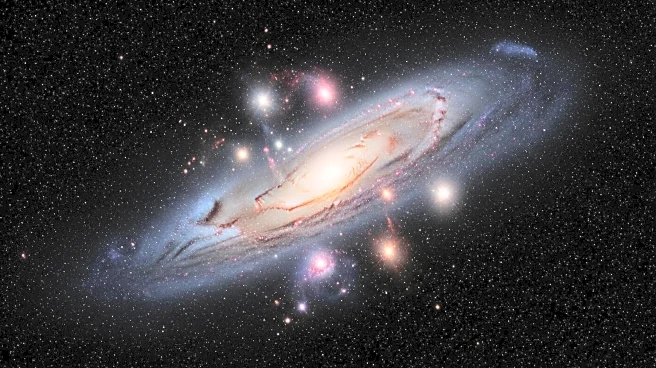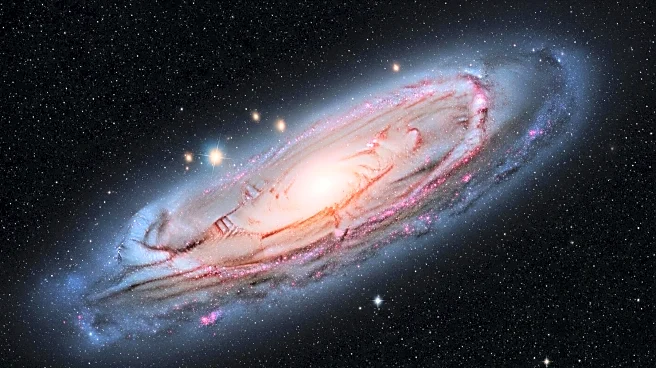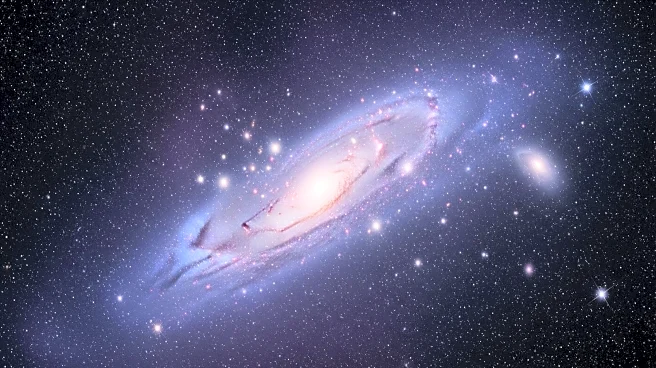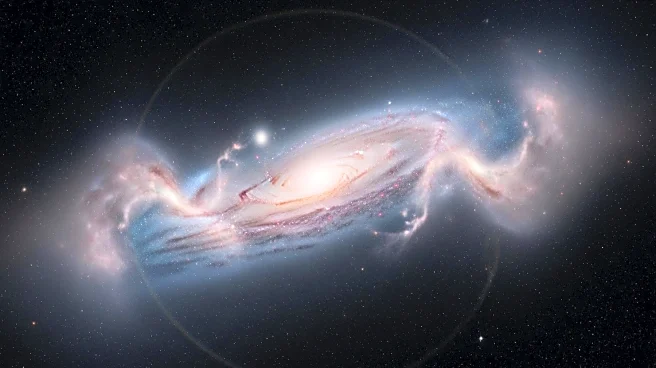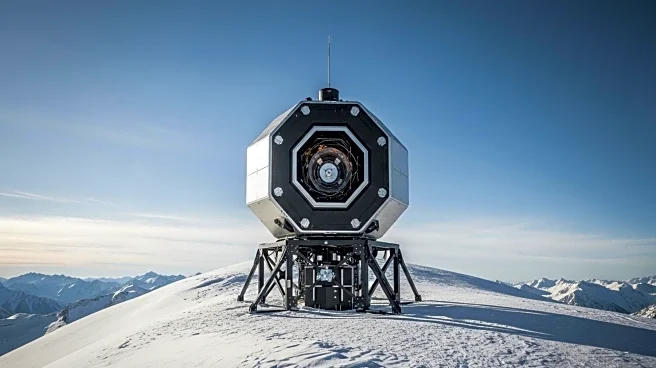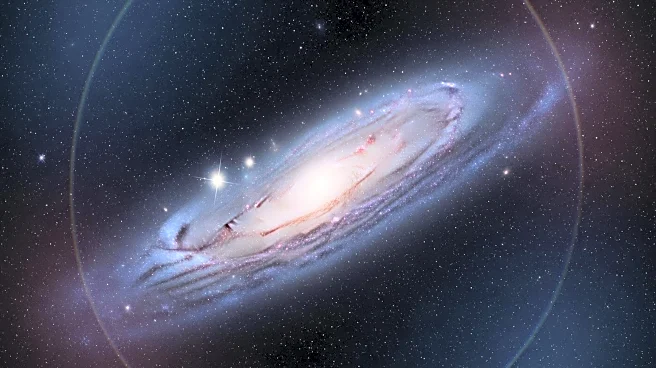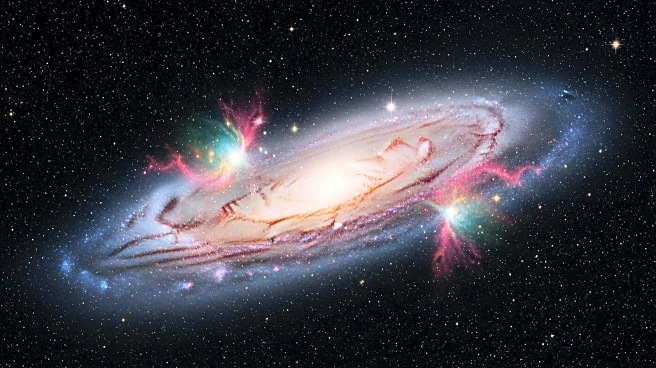What's Happening?
Physics professor Rajendra Gupta from the University of Ottawa has introduced a new model that questions the existence of dark matter and dark energy, suggesting the universe is 27 billion years old. Gupta's approach combines two concepts: covarying coupling constants (CCC) and 'tired light' (TL). CCC posits that constants of nature, such as the speed of light, may vary over time or space, altering calculations of the universe's evolution. TL suggests that photons lose energy over vast distances, causing redshift without cosmic expansion. Gupta argues that weakening forces of nature, rather than dark energy, explain the universe's accelerated expansion. His model challenges the standard cosmological theories that rely on dark matter and dark energy, proposing that these components may not be necessary to explain cosmic observations.
Why It's Important?
Gupta's theory could significantly impact the field of cosmology by altering the understanding of the universe's composition and age. If proven, it would challenge the current model that attributes 27% of the universe to dark matter and 68% to dark energy, with ordinary matter comprising less than 5%. This shift could redefine the timeline of galaxy formation, cosmic microwave background interpretation, and gravitational lensing. The implications extend to how scientists measure cosmic distances and time, potentially revising the Big Bang theory's timeline. The model's acceptance would necessitate new methods for interpreting astronomical data, influencing future research and space missions.
What's Next?
The CCC+TL model requires rigorous testing against cosmic observations, including galaxy rotation profiles, lensing maps, and microwave background patterns. Researchers are examining deep-sky surveys and high-resolution data to validate or refute Gupta's claims. As instruments improve, the model's predictions must align with empirical data to gain acceptance. Independent tests are crucial to distinguish this model from the standard cosmological framework. If CCC+TL consistently matches observations, it could gain traction in the scientific community, prompting further exploration and debate.
Beyond the Headlines
Gupta's model raises ethical and philosophical questions about the nature of scientific inquiry and the assumptions underlying cosmological theories. It challenges the reliance on unseen components like dark matter and dark energy, advocating for a paradigm shift in understanding the universe. This approach encourages scientists to reconsider foundational principles and explore alternative explanations for cosmic phenomena. The debate over dark matter's existence highlights the dynamic nature of scientific progress, where established theories are continually tested and refined.
